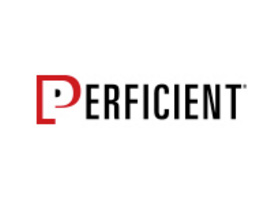The Situation: IBM BPM has been successfully installed and is up and running! Also you have successfully added your active directory(s) to your federated repositories and are able to find users and groups in the WAS console. Continuing with the good news you have also successfully found users in IBM BPM ProcessAdmin and ProcessCenter consoles, […]
Posts Tagged ‘BPM’
Topic Publish – Subscribe Using IBM Integration Designer 8.5
Introduction: Business Process Execution Language (BPEL) is a XML-based language used to define enterprise business processes within Web services. BPEL extends the Web services interaction model and enables it to support business transactions. BPEL can be developed to perform multiple activities such as invoking a web service, publishing a message to topic, subscribe for messages […]
5 Tips to Adopting BPM Methodology
BPM Methodology and Principles: The BPM Methodology is an iterative framework used to effectively analyze and re-design a business process with the goal of constant process improvement. The methodology’s key objective is to foster communication between business and IT in order to establish an optimal business process. Here are 5 tips to ensure that your […]
ODM Series 1: IBM ODM Best Practices – The ABRD
I. The Agile Business Rule Development Practices (ABRD) The Agile Business Rule Development (ABRD) Methodology provides a framework that project teams may adapt to meet the needs of their specific business rules application project. The methodology supports the full rule lifecycle, from discovery to governance by using an ‘agile’, iterative approach. ABRD activities fall into […]
How to Identify Business Decisions for Automation
I was recently asked by a client, “What is a litmus test when identifying components for Decision Management?” This was a great question that unfortunately is all too often not considered during Decision Management projects. Using criteria to determine suitable decisions is needed in order to effectively implement Decision Management. This post will provide the […]
Introduction to Decision Modeling Notation
Decision management is increasingly becoming an important facet of Business Process Automation. This means that building decision models as a way to specify the requirements is more critical in business rules projects. The Object Management Group Board of Directors voted to publish the Decision Model and Notation (DMN) as a specification earlier this year. It provides […]
BI or BPM – what’s a CIO to do?
I came across this blog post from Andrew White, a Research analyst at Gartner controversially titled BI’s days are numbered – Here comes BPM again. The core message of the post is this that BI and data analytics are a means to an end – and it is the change in processes (effected through BPM) that will result in impact […]
Keeping up with the Fixes
A huge number of my projects are platform upgrades, and every time I ask my customers why they haven’t applied a single published fix for any of the products involved since the system was built (sometimes upwards of 7 years ago). They usually reply with a variation on the old trope, “If it ain’t broke, […]
JMeter Testing for a Datapower ESB Implementation – Part 1
Introduction When considering testing a Datapower implementation the first tool that is generally mentioned SoapUI. While this is a good tool for a particular aspect of testing, you may need to expand your testing capabilities to include a broader set of concerns. In this blog I’d like to consider an architectural scenario in which I […]
A SOA Journey Using the TOGAF ADM – Part 3
In this article I address some of the the final elements and models in this iteration of the Preliminary phase. At this point I would like to comment about the ADM as an iterative process. In regards to Architectural Definition which includes an ideation / inception iteration. At this point in the role of Business […]
A SOA Journey Using the TOGAF ADM – Part 2
In part 1 of this series I provided a ten thousand foot view of the project relative to the TOGAF ADM. In this post I’ll start with the proverbial peeling back of the onion. Using an integration project FYI Bank has made a strategic decision to address the challenge of their silos of IT systems […]
FileNet P8 5.2: Highly Scalable Process Architecture
In The Beginning… FileNet created Visual WorkFlo. In the years since, the software improved steadily, but the architecture mostly remained. With the release of version 5.0, IBM had rewritten the entire Process code base in Java; yet it remained wrapped in COM and the macro architecture remained mainly unchanged. Then came P8 5.2, and our […]
